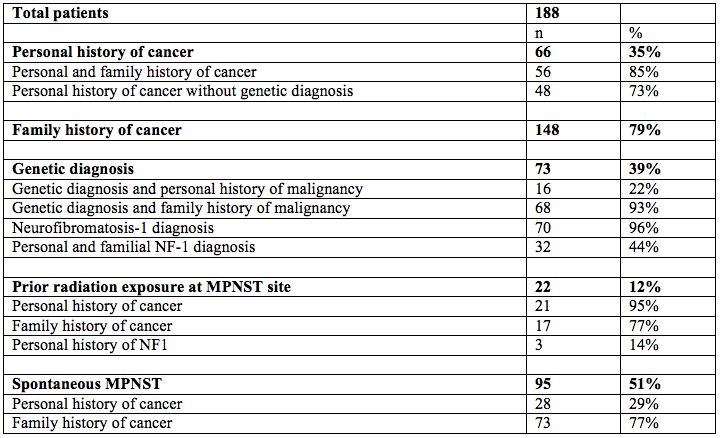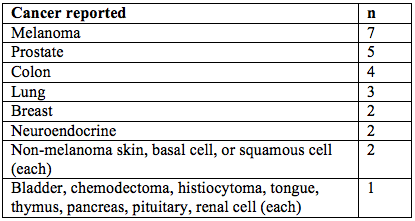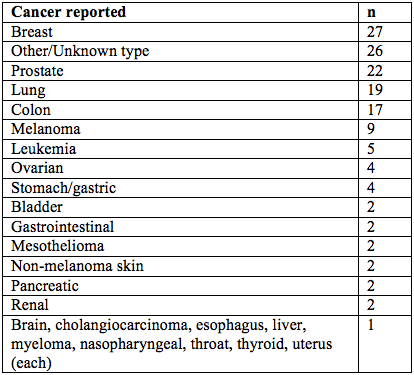Personal and Familial Cancer Histories in Patients with Malignant Peripheral Nerve Sheath Tumors
Megan C. Kaszuba, MD; Ross Puffer, MD; Robert J Spinner, MD
Mayo Clinic, Rochester, MN
Introduction
Malignant peripheral nerve sheath tumors (MPNSTs) are found at increased incidence in individuals affected by neurofibromatosis type 1 (NF1) and prior radiation therapy. Association of MPNSTs with additional cancers and genetic syndromes is not broadly described.
Methods
A retrospective search involving MPNST cases at our institution after 1994 was performed. The electronic medical record was reviewed by examining the clinical problem list and standard patient and family history form for cancer diagnoses and genetic diagnoses. We reviewed available documentation from Radiation Oncology, Medical Genetics, and Medical Oncology for adult patients or Hematology Oncology for pediatric patients.
Results
A total of 188 patients were included (Table 1). Of these, 66 patients (35%) had a personal history of additional malignancy, 148 (79%) had family history of malignancy, 73 (39%) had a genetic syndrome which was most commonly NF1, and 22 (12%) had history of local radiation. In spontaneous group patients without radiation exposure or known genetic disorder, melanoma was the most frequently reported with 7.4% incidence in the spontaneous group (Table 2).
Discussion
Though melanoma was the most common prior diagnosis in patients with spontaneous MPNST, melanoma and skin cancers are the fifth most common cancer in the United States, with an estimated incidence of 5.2%. Breast, lung, prostate, and colorectal cancers comprise the first- through fourth-most common, which is a trend similar to that in our study population (Table 3).
Conclusion
Targeted treatments are in development for NF1-affected patients, which may offer additional treatments for MPNSTs. Future research on associated malignancies and genetic syndromes may prompt changes in cancer screening recommendations after MPNST diagnosis and may broaden targeted treatment options. A possible association with increased risk of melanoma warrants further research.
Table 1: Patient and family characteristics
Table 2: Number of cancer incidences in patients with spontaneous MPNSTs and a personal history of cancer
Table 3: Number of cancer incidences in family members of patients with spontaneous MPNSTs
Back to 2018 ePosters
